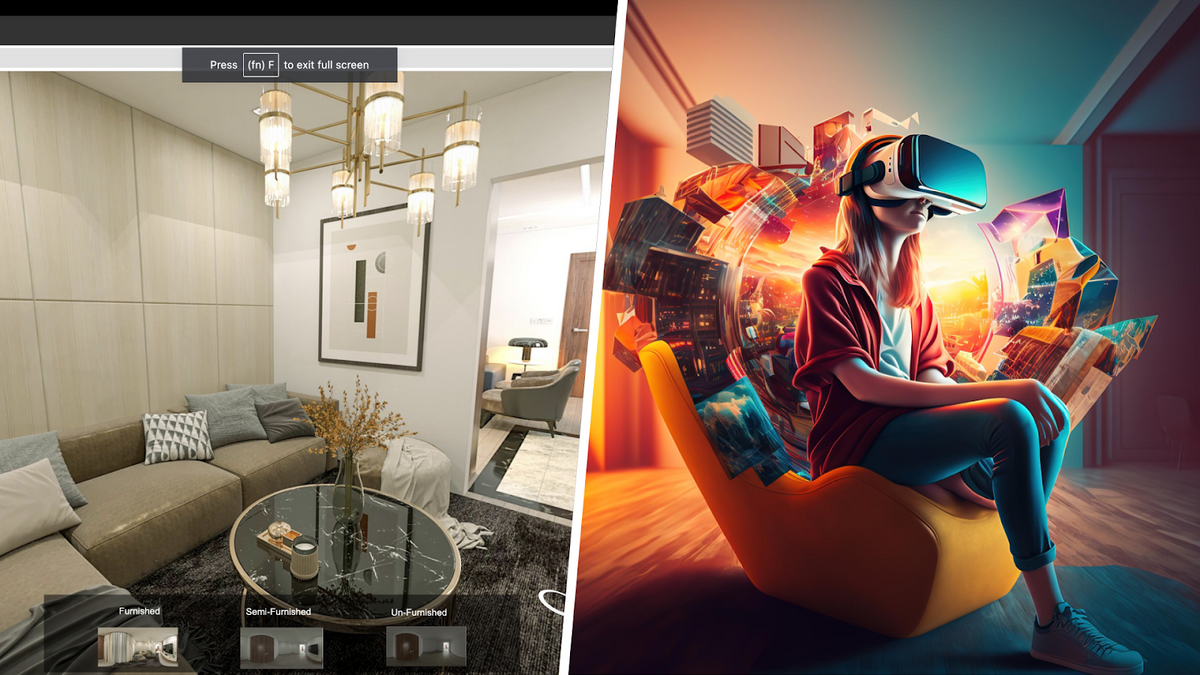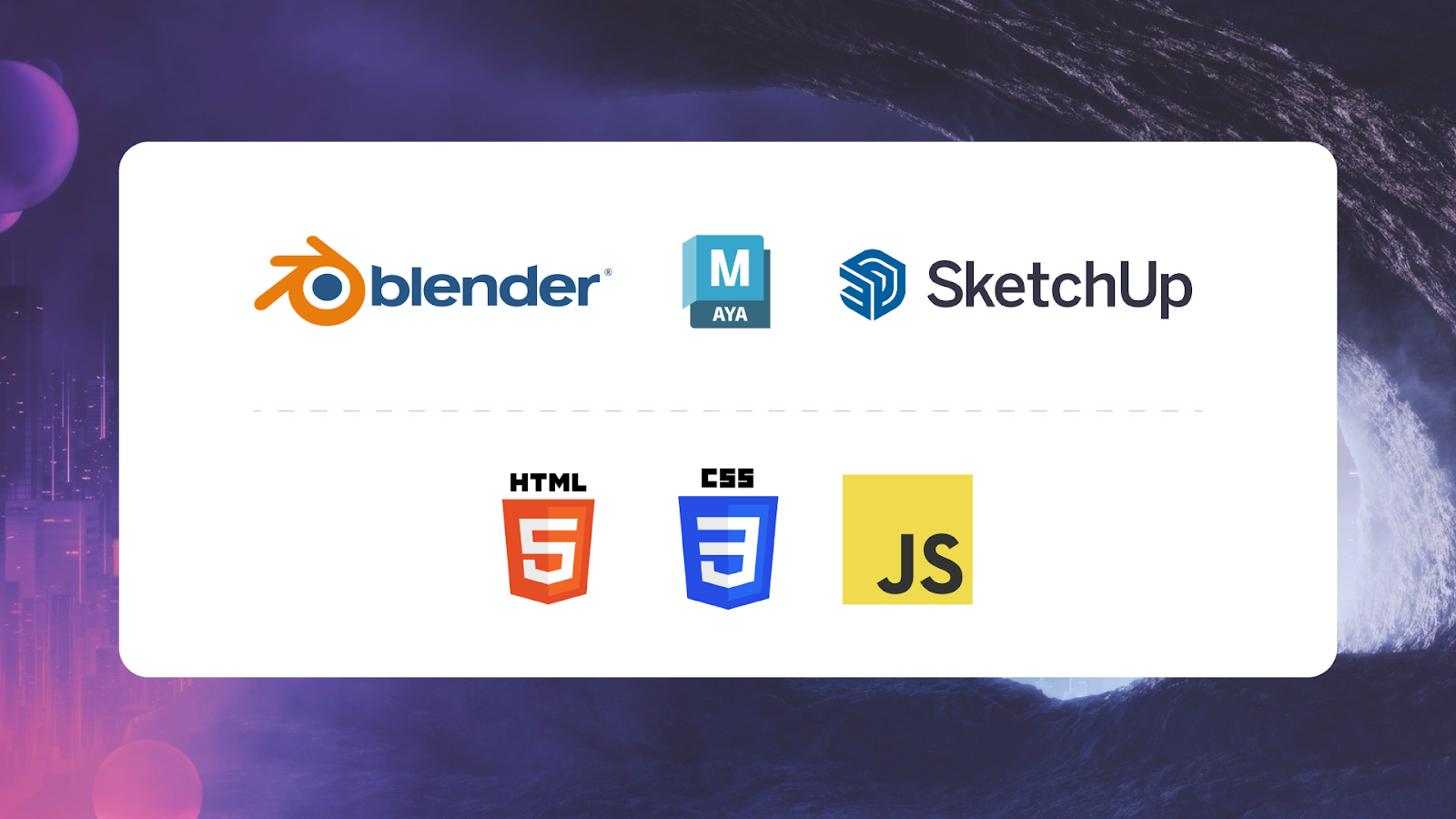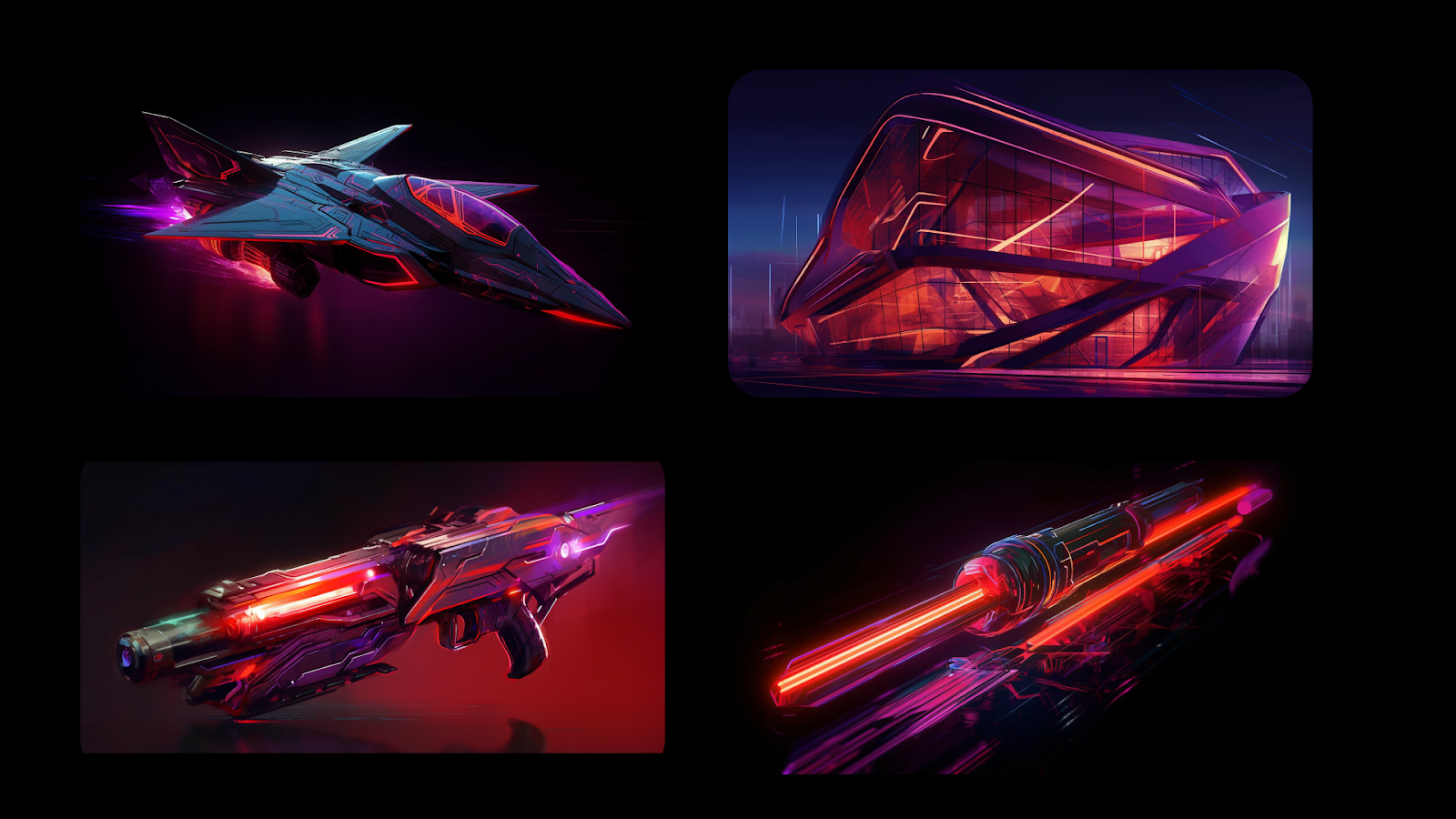3D Content Creation for Web Vs for Games: What Should You Pursue?
Learn the difference between creating 3D content for web (a new emerging field) vs creating 3D content for games (traditional field for 3D content). Also explore career scope in each.

3D content has come a long way in the past 10 years! It's amazing to see how far we've come from the early days of clunky, blocky models to the highly detailed, hyper-realistic creations of today.
One of the biggest game-changers has been the rise of real-time 3D. With the explosion of VR and AR, we're now able to create experiences that are truly mind-blowing.
And then there's the metaverse, the shared virtual space that's taking the world by storm. It's like a whole new frontier, and everyone wants a piece of the action. With all these new virtual experiences popping up, there's a huge demand for 3D content, and it's only going to keep growing.
It's truly an exciting time to be a 3D artist or designer. The possibilities are endless, and with each new breakthrough in technology, the limits of what we can create are pushed further and further.
3D Content for Web Vs 3D Content for Games
Creating 3D content for the web means creating content that is optimized for online viewing. It's all about creating engaging, interactive experiences that can be accessed from anywhere with an internet connection. This type of content is often used for marketing and advertising, or for showcasing products and services.
On the other hand, creating 3D content for games is all about creating high-performance graphics that can be displayed in real-time on a wide range of devices. Whether it's a console game, a mobile game, or a VR experience, the goal is to create visuals that are as immersive and realistic as possible.
So, as you can see, the main difference is really about the end goal - creating for the web is about creating content that can be easily viewed online, while creating for games is about creating content that can be displayed in real-time on a wide range of devices. But despite these differences, there's still a lot of overlap between the two, and many 3D artists find that they enjoy working on both types of projects.
Now, let’s take a deep dive into each, and help you figure out which type of project is right for you.
3D Content for Web

What does 3D content for the web encompass?
When you're crafting 3D content for the web, you're bringing to life an interactive and immersive experience that can be easily accessed online. What you are doing is transporting your audience into a captivating digital world with just a click of a button. This means it needs to be optimized for online delivery - it has to be lightweight, easily accessible, and able to run smoothly on a wide range of devices.
This type of content can take many forms - it could be an interactive 3D model of a product, a virtual tour of a property, a 3D animation for a marketing campaign, or even a fully-realized virtual world. The common thread is that it's all about creating an engaging, interactive experience that can be accessed from anywhere with an internet connection.
Creating 3D content for the web requires a different set of skills and techniques than creating content for games. You need to be familiar with web technologies, such as HTML, CSS, and JavaScript, as well as 3D software and tools like Blender, SketchUp, Babylon and Three.js.
Tools and technologies used to create 3D content for web
When you're working on a project that will be viewed online, you need to choose the right tools and technologies to ensure that your content is optimized for online delivery.
One of the most important things to consider when creating 3D content for the web is the file format. You want to choose a format that is lightweight and easily accessible, such as GLB or USDZ, which are both optimized for web delivery and compatible with a wide range of devices.

In terms of software, there are a variety of tools and programs that are commonly used to create 3D content for the web. These include 3D modeling and animation software, such as Blender, SketchUp, and Maya, as well as web development tools, such as HTML, CSS, and JavaScript.
Blender is a free and open-source software that offers a comprehensive set of tools for modeling, rigging, animation, simulation, and more. SketchUp is known for its ease of use and is often used for architectural and interior design visualization. Maya is a professional-grade 3D animation software used in the film, television, and video game industries.
On the web development side, HTML, CSS, and JavaScript are essential tools for creating 3D content for the web. HTML (Hypertext Markup Language) is used to create the structure and content of a web page, while CSS (Cascading Style Sheets) is used to style and format the web page. JavaScript is a programming language that allows for the creation of dynamic and interactive web content, including 3D graphics and animations.
One of the key technologies used to create 3D content for the web is WebGL, which is a JavaScript API that allows 3D graphics to be rendered directly in a web browser. This means that your content can be easily accessed and viewed without the need for any additional software or plugins.
Another important tool for creating 3D content for the web is Three.js, which is a JavaScript library that makes it easy to create and display 3D content in a web browser. With Three.js, you can create interactive 3D scenes, animations, and models that can be accessed from anywhere with an internet connection.
The tools and technologies used to create 3D content for the web are constantly evolving and improving, which means that there are always new and exciting opportunities for creativity and innovation in this field.
The importance of optimization for web performance
When creating 3D content for the web, it's important to prioritize optimization for web performance. This means taking into account the size of your files, the number of objects and textures in your scene, and the overall complexity of your 3D models.
Optimizing for web performance ensures that your 3D content will load quickly and smoothly, even on devices with slower internet connections. This is crucial for a positive user experience, as users are likely to abandon a website that takes too long to load.
Additionally, optimization can also help to minimize bandwidth usage and reduce server load, which can be especially important for large-scale projects.
There are a number of strategies that you can use to optimize your 3D content for web performance, such as reducing the number of polygons in your models, using compressed textures, and limiting the use of complex shaders.
Paying attention to web performance optimization can help you to create high-quality, engaging 3D content that is accessible to a wide audience.
Advantages and limitations of creating 3D content for web
Advantages:
- Huge audience: Thanks to the internet, creating 3D content for the web gives you the chance to show off your work to a massive, global audience.
- Easy to view: People can view your 3D content right in their web browser, so there's no need to download anything or install any software.
- Cost-effective: Creating 3D content for the web usually requires less hardware and software, so it's a more cost-effective option.
Limitations
- Performance: Most web browsers don't have the processing power to handle super complex 3D content, so there may be limits to what you can display in real-time.
- Compatibility: Different web browsers have different levels of support for WebGL and other 3D technologies, so you've got to be careful about compatibility.
- File size: If your 3D content is too big, it'll take longer to load, which can be a bummer for your audience.
- Interactive limitations: While 3D content for the web can be interactive, it may not be as interactive as native apps and games.
In the end, it comes down to what you want to achieve with your 3D content. If you want to reach a huge audience and keep costs down, creating 3D content for the web might be the way to go. But if you want more control over performance and interactivity, you might want to consider creating 3D content for games instead.
What 3D Content for Games Encompasses:

Assets: This includes things like weapons, vehicles, buildings, and other props that players interact with in the game.
Characters: You'll be creating 3D models of characters, both playable and non-playable, along with animations and rigging.
Environments: This encompasses the world that the player explores, including landscapes, buildings, and other elements.
Other Elements: Depending on the game, you might be asked to create other elements, such as particle effects, lighting, and more.
When it comes to creating 3D content for games, you've got to keep performance in mind. These games are designed to run on a variety of hardware, from low-end laptops to high-end gaming PCs, so you've got to make sure that your 3D content is optimized to run smoothly on all of these platforms.
Tools and technologies used to create 3D content for games
When it comes to creating 3D content for games, there are a lot of tools and technologies at your disposal. Here's a breakdown of some of the most popular ones:
3D modeling software: This is where you'll be creating your 3D models. Popular options include Maya, Blender, and 3DS Max.
Animation software: You'll need software to animate your 3D models, and this can be done with tools like Maya or Blender.
Rigging software: Rigging is the process of setting up a 3D model so that it can be animated. This can be done with tools like Maya or Blender, or with rigging-specific tools like AutoRig Pro.
Game engines: Game engines are the platforms that you build your games on. Popular options include Unity, Unreal Engine, and Godot.
Texturing software: You'll need software to create the textures for your 3D models, and popular options include Substance Painter, Quixel Mixer, and Mari.
Importance of creating high-quality, immersive content for games:
When it comes to creating 3D content for games, it's not just about creating something that looks good, but also something that feels good. Players expect an immersive experience, and the quality of your 3D content will play a big role in determining whether or not they get that experience.
That's why it's so important to focus on creating high-quality, immersive experiences when working on 3D content for games. You'll need to consider things like lighting, textures, animations, and more in order to create something that really draws players in and keeps them engaged. And with so many games out there, you need to ensure that your 3D content stands out and makes a lasting impression on players.
So, if you're looking to create top-notch 3D content for games, keep this in mind and put extra care and effort into making your work truly immersive and high-quality. Players will appreciate it, and you'll be well on your way to success in the world of 3D content creation for games!
Advantages of Creating 3D Content for Games
One of the biggest advantages of creating 3D content for games is the level of control you have over the user experience. With games, you have complete control over the player's environment, including lighting, sound, and physics. This allows you to create truly immersive experiences that engage and excite players in ways that are simply not possible with other forms of media.
Another advantage of creating 3D content for games is that games often offer a much wider range of possibilities for interactive content. Whether it's a first-person shooter or a role-playing game, you have the ability to create deep and engaging experiences that challenge players and reward their efforts.
Limitations of Creating 3D Content for Games
However, creating 3D content for games also comes with its own set of limitations. One of the biggest limitations is the high level of technical expertise required to create high-quality 3D content. From understanding 3D modeling and animation software, to working with complex physics engines and programming languages, creating 3D content for games requires a deep understanding of many different technical disciplines.
Additionally, creating 3D content for games can be time-consuming and resource-intensive. With so many moving parts and complex systems to keep track of, it can be difficult to ensure that everything works together seamlessly.
Comparing 3D Content for Web vs Games
A side-by-side comparison of the key differences between creating 3D content for web and games
The future
The future of 3D content creation is highly dynamic and rapidly evolving. As technology continues to advance, the line between creating 3D content for web and games is becoming increasingly blurred. In the near future, it is likely that the distinction between the two will become even more ambiguous, with the creation of cross-platform experiences that blur the lines between the two.
For example, game engines such as Unity and Unreal Engine are now being used to create highly interactive and immersive web experiences. Web technologies, such as WebGL and WebXR, are also becoming increasingly sophisticated, allowing for the creation of complex 3D environments that can be easily accessed from a web browser.
As a result, the content creation process is becoming more streamlined and integrated, with developers able to create content once and deploy it across multiple platforms. This is particularly relevant for virtual and augmented reality experiences, which are becoming increasingly popular and accessible.

